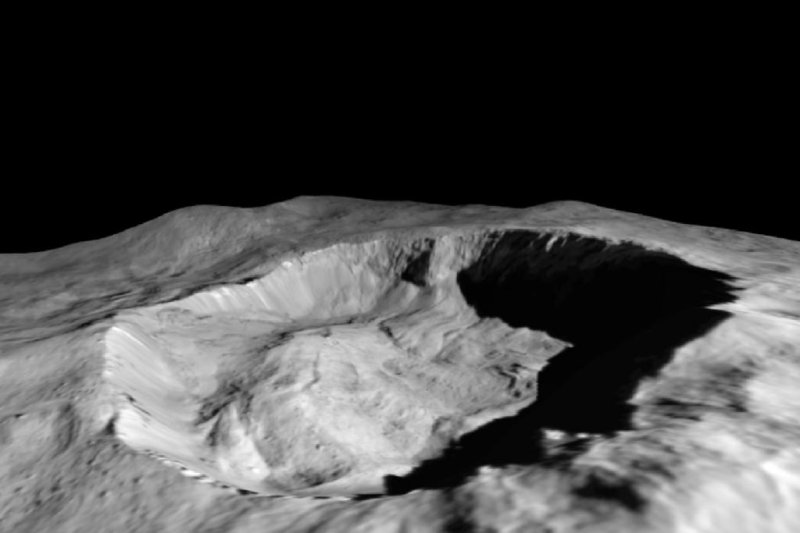Dawn observations showed the amount of water ice on the north slope of Ceres' Juling Crater is increasing. Photo by NASA/JPL-Caltech/UCLA/MPS/DLR/IDA/ASI/INAF
March 15 (UPI) -- Dawn has captured further evidence of Ceres' highly variable nature. The NASA space probe documented recent changes on the dwarf planet's surface.
"This is the first direct detection of change on the surface of Ceres," Andrea Raponi, a researcher at the Institute of Astrophysics and Planetary Science in Rome, Italy, said in a news release.
Dawn's observations are detailed in a pair of new papers, published this week in the journal Science Advances.
Water ice has previously been identified at several locations on Ceres' surface. The latest observations show water ice on the northern wall of the Juling Crater is increasing in abundance.
"The combination of Ceres moving closer to the sun in its orbit, along with seasonal change, triggers the release of water vapor from the subsurface, which then condenses on the cold crater wall," Raponi said. "This causes an increase in the amount of exposed ice. The warming might also cause landslides on the crater walls that expose fresh ice patches."
For several years, Ceres and its dynamic geology -- and its strange bright spots -- has captured the attention of scientists. Dawn has helped planetary scientists begin to understand the composition of the dwarf planet's crust. In addition to water ice and salts, researchers believe Ceres' out layers feature organic deposits.
The most recent observations by Dawn also revealed several newly exposed portions of crust on Ceres. With the help of Dawn, scientists were able to locate sodium carbonates among the 12 newly exposed sites.
Researchers were able to identify water inside the carbonate structure. The discovery marks the first time hydrated carbonate has been found on a planetary body besides Earth. Because hydrated carbonate would become dehydrated if exposed to the elements for long periods of time, scientists can be certain that the sites were created by recent geologic activity on Ceres' surface.
"Changes in the abundance of water ice on a short timescale, as well as the presence of hydrated sodium carbonates, are further evidence that Ceres is a geologically and chemically active body," said Dawn scientist Cristina De Sanctis.
Scientists still aren't sure whether Ceres' unusual composition is the result of an evolving ocean, frozen solid millions of years ago, or the ongoing influence of cryovolcanic intrusions -- or some combination of the two.















